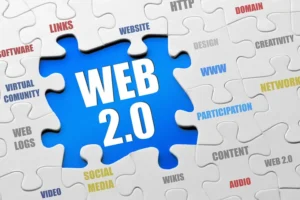Table of Contents
Google Has Evolved (Again)
Every year, Google fine-tunes how it ranks websites and 2025 has brought one of the most significant algorithm shifts in recent memory. For businesses, marketers, and SEO professionals, this means one thing: adapt or disappear from the SERPs (Search Engine Results Pages).
Google’s 2025 update focuses heavily on search intent, real-time user behavior, and AI-generated content. The update aims to prioritize genuine value for users over trickery or fluff. If your site isn’t meeting these new expectations, your rankings may already be slipping.
In this post, we’ll break down the major changes and what you can do to stay ahead.
1. User Intent Is King

In 2025, Google is smarter than ever at interpreting what users really want when they type something into the search bar. It’s no longer enough to match keywords—you need to match intent.
What Changed?
- Google’s Search Generative Experience (SGE) now incorporates contextual understanding of queries across multiple layers: behavioral data, location, past searches, and semantic relationships.
- It prioritizes topical depth, not just keyword repetition.
What You Should Do:
- Focus on topic clusters, not single keywords.
- Create content that fully answers questions and anticipates follow-ups.
- Use tools like AnswerThePublic or Google’s “People Also Ask” to guide content structure.
Pro Tip:
Update your content to include FAQs, comparisons, pros & cons, and tutorials to cover multiple angles of a topic.
2. E-E-A-T Just Got Stronger

E-E-A-T (Experience, Expertise, Authoritativeness, and Trustworthiness) has been a ranking signal for years, but in 2025, it’s now central to Google’s core updates.
What Changed?
- Google’s systems are better at verifying author credentials, sourcing, and reputation signals.
- Sites with vague authorship or no demonstrable expertise are being pushed down in rankings.
What You Should Do:
- Add author bios with credentials.
- Use trust signals like testimonials, external citations, privacy policies, and secure HTTPS.
- Link to credible, up-to-date sources.
Pro Tip:
Don’t use anonymous blog posts build authority by publishing under real names, with LinkedIn or author pages linked.
3. AI-Generated Content: Proceed with Caution
In the age of ChatGPT and Gemini, AI content is everywhere but Google is not blindly rewarding AI-written blogs.
What Changed?
- Google now uses advanced AI-detection methods to penalize low-quality, mass-generated content.
- It prioritizes original insights, data-driven content, and human oversight.
What You Should Do:
- Use AI to assist, not replace human input.
- Blend automation with real personal experiences, data, and storytelling.
- Avoid publishing hundreds of generic articles.
Pro Tip:
Add unique perspectives, expert quotes, and first-hand examples to AI-assisted content to enhance originality.
4. Core Web Vitals 2.0

Google’s Core Web Vitals have expanded in 2025, with new metrics around Interaction to Next Paint (INP) and Responsiveness Stability.
What Changed?
- INP replaces FID (First Input Delay) and focuses on total responsiveness, not just initial load.
- More weight is given to UX signals, especially on mobile.
What You Should Do:
- Use tools like PageSpeed Insights and Lighthouse to monitor performance.
- Optimize images, reduce unnecessary JavaScript, and implement lazy loading.
- Design with mobile-first principles.
Pro Tip:
Sites that load in under 2 seconds and respond quickly to user input are now outperforming competitors across all niches.
5. Visual & Video Content Prioritization
Search results in 2025 are more visual. Google now prefers rich media that helps users quickly understand complex topics.
What Changed?
- Featured snippets now include YouTube Shorts, GIFs, and infographics.
- Pages with video summaries or visual guides get a boost in ranking.
What You Should Do:
- Add short videos or motion graphics to blogs.
- Use structured data (schema markup) to tag images and video content.
- Create step-by-step image guides when explaining tutorials.
Pro Tip:
Embed a 30-second video overview at the top of blog posts it increases time on page and improves rankability.
6. Brand Signals Matter More Than Ever
Google is giving more weight to brand credibility from reviews to social presence to branded search volume.
What Changed?
- Google now tracks branded queries, social engagement, and online reputation as ranking signals.
- Trustworthy brands (even smaller ones) are outperforming generic content farms.
What You Should Do:
- Build consistent brand presence across all channels (web, social, local SEO).
- Encourage Google Reviews, testimonials, and influencer mentions.
- Respond to reviews and engage on Google Business Profile.
Pro Tip:
Use your blog as a way to reinforce brand identity, not just traffic it’s a long-term SEO asset.
Conclusion: Adapt Fast or Fade Away
The Google algorithm update in 2025 is not just a technical shift it’s a philosophical one. The search engine now behaves more like a curator of trust and value, rather than a robotic index.
If you’re still stuffing keywords or relying on outdated tactics, your rankings will suffer. But if you evolve with these changes by prioritizing intent, expertise, experience, speed, and branding you’re set to thrive.
